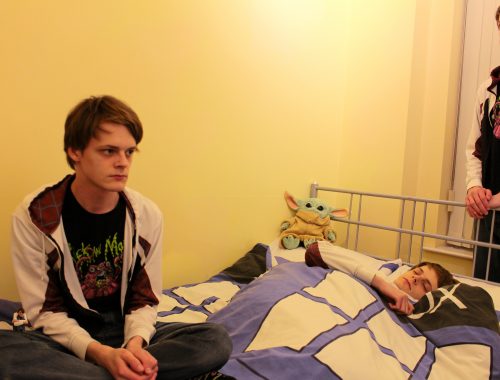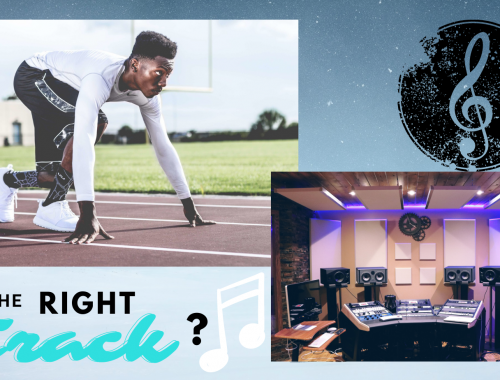There’s a first time for everything
As I sat in a café, nervously waiting for my first initial meeting with Una, publisher of View magazine, I became aware of the humbling fact that I had no idea what would be asked of me. Who would I be filming? Where would I be filming? This feeling was both exciting and daunting as I had never used my filmmaking skills in an environment outside of university. Our initial emails were short and sweet, nothing had been asked of me, only to arrive at the café on that Monday afternoon. Upon meeting with Una, I was immediately at ease, and we quickly chatted about the tasks ahead of me. My first project was to conduct research for a potential interview with a deaf group or individual for their upcoming magazine launch and in the future, film the interview.
Reflecting on my first task as assistant producer and researcher, I will use Borton’s model to explore the impact of my research and the methods I employed whilst also evaluating my filming performance when shooting the interview. Consisting of three focus points as Jasper (2003) claims “the model encompasses three simple questions to be asked of the experience or activity to be reflected on, what? So what? Now what?”

What?
The ‘what’ refers to the task at hand and the awareness of the roles required for that task. My given role was assistant producer and researcher which required me to research the deaf community in Northern Ireland and through the research I conducted, find a suitable participant for a three-minute video interview. Using the internet and social media, I was able to create a list of possible participants who were part of the deaf community and promoted deaf activism. As my first given job, I was excited with the prospect of filming an interview with such a meaningful purpose of highlighting the deaf experience and I was inspired by various deaf sporting teams, charities, artists, and individual activists. I made my way through the list, contacting my sources through email and then further with a phone call for certain organisations.
So what?
The ‘so what’ allows me to draw on the significance of my role and the evaluation of the outcome of my research and practical project. Researching allowed me to apply my interpersonal skills into a working environment as I had to be convincing and engaging when interacting with the possible deaf participants and from feedback from the charity I eventually worked with, was told this was a skill I had. However, at this stage of my research when contacting many deaf organisations, I found I was struggling to get immediate responses. I later discovered this was due to my use of communication with members of the deaf community as I was using too much elaborate wording and as some members of the deaf community have a shorter range of vocabulary, I failed to get a response from some organisations. As Kathleen McMillian suggests “it is part of human nature to learn continually from experience, generally growing more proficient and wiser in our responses to events as we grow older,” (2013,31) and with this in mind, allowed me to learn from my mistake and conduct my communication in a different manner to other organisations. I suppose there is a first time for everything, including mistakes.
I finally secured the subject for my interview; a deaf awareness charity D’Sign Arts NI. As assistant producer, the process of seeing an initial idea progress into actuality was an exciting aspect of the job and boosted my confidence in my role as assistant producer as I felt successful in completing my task. However, the job had only begun. The next stage of the project was filming the interview and whilst this may sound simple, a lot of pre-production work was required and with the magazine launch in sight, I needed to organise myself and the interviewees faster than I expected. I believe a strength of mine throughout my first project was my organisational skills. I effectively created a list of questions, secured a British sign language interpreter, ordered catering, and found a location accessible for all four interviewees. My real challenge was on the day of filming as I had one afternoon to get things perfect which placed a slight panic in my mind. What if I completely mess this up? I tried to push these thoughts to the back of my mind and set my camera up an hour early. However, as everyone knows when filming, something will most likely go wrong. As my deaf interviewees entered the room, and with an interpreter running quite late, I found myself balancing trying to contact the interpreter with the task of setting my interviewees in their positions which as one can imagine, was slightly stressful.
Finally, as my interpreter arrived and the interview was ready to start, I could slightly relax and be behind the camera. The interview, conducted by a journalist, was a success and the members of the charity shared powerful stories on the deaf experience. When reviewing my practical skills, I believe the interview itself required more lighting as I had to adjust whilst editing.
Now what?
In terms of the actions I intend to take upon reflection, I would conduct my research more thoroughly ensuring my communication was more effective in relation to the deaf community. When reflecting on the outcome of the interview, I believe I would need to scout my location before I filmed to ensure elements such as lighting worked more coherently.
Bibliography
McMillian, K and Weyers, J. (2013) How to Improve your Critical Thinking and Reflective Skills, Harlow: Pearson Education UK.
Jasper, M (2003). Beginning reflective practice. Cheltenham: Nelson thorn
You May Also Like

AAAH or (Why Tom sucks at selling himself)
25 November 2021
Facing Avoidance
26 November 2021
